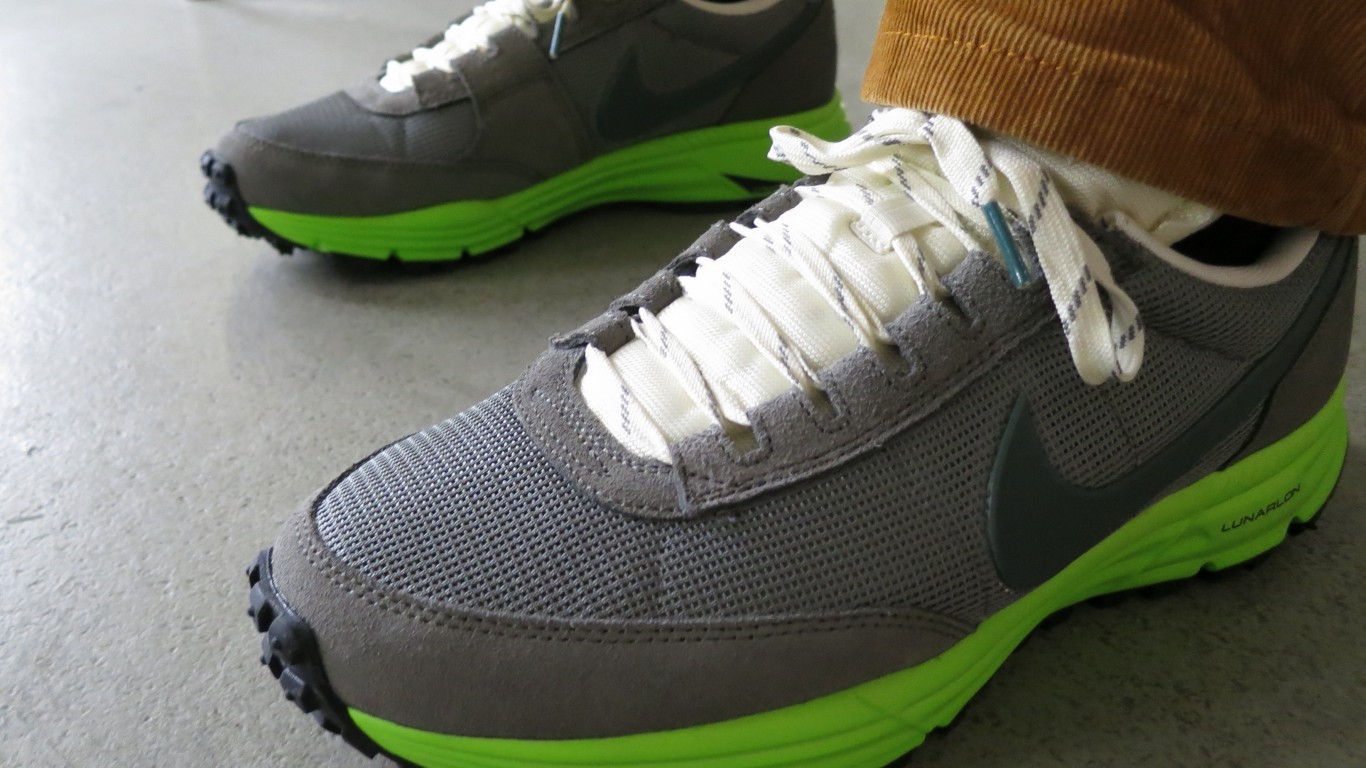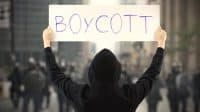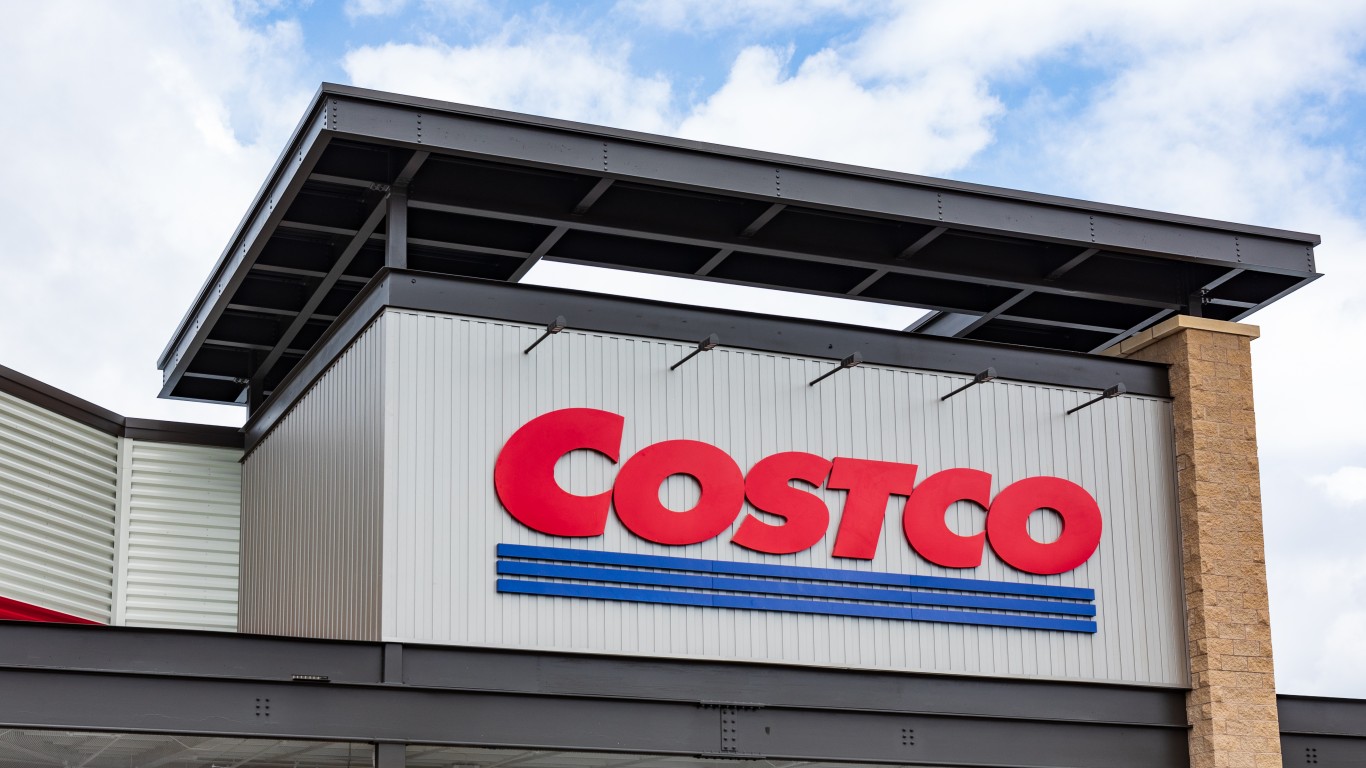
When sports gear giant Nike Inc. (NYSE: NKE) reported third-fiscal quarter earnings late last month, the company posted $0.53 in earnings per share (EPS) on $10.1 billion in revenue. In the same period of last year, Nike reported $0.68 per share and $9.61 billion. Analysts had forecast EPS of $0.60 in and $9.84 billion in revenue.
Nike’s stock price dropped by $2.20 the day it released earnings, contributing to a decline of nearly 33% for the month of March. By March 30, the company had recovered more than 25% of the monthly loss, before dipping again on the 31st to close the month down about 11%.
Between April 1 and April 24, shares gained about 11.5% and had closed the dip in its share price since March 1 to less than 5%. Over that eight-week span, the S&P 500 dropped 8.2% and the Dow Jones industrial average dropped 11%.
On April 27, competitor Adidas reported that first fiscal-quarter net income from continuing operations decreased 97% from €631 million ($685 million) in the first quarter of 2019 to €20 million ($21.7 million). Basic EPS from continuing operations fell 96% year over year, from €3.17 ($3.44) to €0.13 ($0.14).
Nike’s third quarter ended in February, while Adidas’s quarter did not end until March. Even comparing the same three-month period (December through February), Nike’s share price lost less than half as much as Adidas. Using the first three months of 2020, Adidas stock has dropped nearly 32% while Nike stock has lost just over 18%.
Nike’s Secret Sauce: the Brand
Nike reported a third-quarter revenue increase of 5% (7% excluding foreign currency effects), along with a whopping 36% increase in e-commerce sales. Nike’s strong brand and product pipeline drove a price increase and boosted sales of both apparel and footwear. Some analysts also believe that retailers seeking to boost weak sales while stay-at-home orders are in force turned to Nike to increase customer traffic, increasing the company’s bargaining power as a supplier.
Last November, Nike closed its store on Amazon.com Inc. (NASDAQ: AMZN), saying that the company would begin to “focus on elevating consumer experiences through more direct, personal relationships” rather than extend and expand the program with Amazon. Nike CEO, John Donahoe, who joined the company from eBay Inc. (NASDAQ: EBAY), likely pushed Nike toward going its own way online.
Nike also probably was tired of Amazon’s failure to police the sale of knock-offs and fake products on other Amazon Marketplace sites. Nike is not a luxury brand like Louis Vuitton or Tiffany, but like those brands, it cannot afford to have authentic products costing hundreds of dollars competing with fakes costing much less.
The Lasting Power of Endorsements and the Rising Power of E-Commerce
Nike introduced its first Air Jordan shoes in 1984, the year Michael Jordan joined the Chicago Bulls NBA team. Jordan was a member of six championship teams before retiring after the 1998 win. A new ESPN documentary, The Last Dance, on his final year in a Bulls uniform began a five-week run on April 19. Nike sold out its newest $140 Jordan Brand sneakers during the first evening’s broadcast.
Nike also signed the top women’s basketball player in the country, Sabrina Ionescu, to an endorsement contract last week. Ionescu will play for the New York Liberty beginning in the fall — provided, of course, that the WNBA season gets going.
Nike shut down all its U.S. and many international stores beginning March 16 to help stop the spread of coronavirus. All Nike stores in China had been closed earlier, as were those in Japan and South Korea. By the time the company reported results on March 24, about 80% of 7,000 Chinese stores that sell Nike gear had reopened. Nike also reopened one of its stores in Wuhan, the city where the outbreak first emerged.
Nike did not dawdle but closed its stores in China immediately and pushed digital sales to Chinese consumers stuck in their homes. The results were a big increase in digital sales that continued to be strong even after the stores reopened.
CEO Donahoe said that he believed Nike’s experience in Asia gave the company a blueprint for how to deal with the social distancing and stay-at-home rules that were later introduced in the United States. While consumers aren’t completely sold on returning to malls and shops in person yet, Nike thinks the company will be ready when shoppers return.
Combined with Nike’s own stores, digital sales are expected to post double-digit gains over the next few years. Those digital sales rise from a fairly low base. That’s the main reason they can grow by a third or more year over year for a while yet. The stay-at-home rules help get people used to the idea of purchasing more stuff online, and once the convenience of that sinks in, there is a good chance that traditional brick-and-mortar retailers will be even more battered than they are now.
What Wall Street Is Thinking About Nike
Analyst Erinn Murphy at Piper Sandler raised her price target on Nike stock from $94 to $96 on April 28. On March 2, she had lowered the price target from $110 to $103 per share, and then lowered it to $94 later. She has maintained an Overweight rating throughout.
The poor results reported by Adidas have seeped into concerns for Nike. By now, no one expects the calendar second quarter of the year to be anything but worse than the first for just about every publicly traded company. One significant issue for Nike will be getting products to retailers, given the upheaval in the distribution chain.
The 12-month analysts’ outlook for Nike is pretty strong. Of a total of 35 ratings, 27 maintain a Buy and five maintain a Hold. No analyst lists the stock as a Strong Buy, and just three maintain a Sell rating. At a consensus price target of around $97.80, the implied upside to the price target is nearly 10%. While investors might hope for more in a normal year, 2020 is anything but normal.
Want to Retire Early? Start Here (Sponsor)
Want retirement to come a few years earlier than you’d planned? Or are you ready to retire now, but want an extra set of eyes on your finances?
Now you can speak with up to 3 financial experts in your area for FREE. By simply clicking here you can begin to match with financial professionals who can help you build your plan to retire early. And the best part? The first conversation with them is free.
Click here to match with up to 3 financial pros who would be excited to help you make financial decisions.
Have questions about retirement or personal finance? Email us at [email protected]!
By emailing your questions to 24/7 Wall St., you agree to have them published anonymously on a673b.bigscoots-temp.com.
By submitting your story, you understand and agree that we may use your story, or versions of it, in all media and platforms, including via third parties.
Thank you for reading! Have some feedback for us?
Contact the 24/7 Wall St. editorial team.
 24/7 Wall St.
24/7 Wall St.


